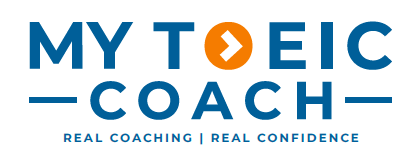✏ Why “He Work” Is Wrong — And Other TOEIC Traps That Cost Points
Some TOEIC questions look easy. Others hide the mistake so well that even strong test-takers fall for it.
One of TOEIC’s favourite tricks? Picking the wrong action word for the person or thing doing it.
Here’s how to spot the pattern and fix it — without wasting time on technical rules.
1️⃣ The Easy Case You Already Know
If it’s one person or thing, the action word usually ends with -s in present tense. If it’s more than one, it usually doesn’t.
Example:
He ____ at the bank.
(A) work
(B) works
(C) working
(D) worked
✅ Correct Answer: (B) works — “He” is one person, so you need the -s form in present tense.
❌ (A) is missing the ending. (C) needs “is” before it. (D) changes the time to past.
2️⃣ Extra Words Between the Doer and the Action
TOEIC loves to put extra detail between the doer and the action to make you lose track.
Example:
The manager of the new departments ____ currently working on the schedule.
(A) are
(B) is
(C) be
(D) being
✅ Correct Answer: (B) is — “Manager” is the one doing the action, and there’s only one. The words “of the new departments” are just detail.
❌ (A) is for more than one. (C) and (D) don’t fit the sentence structure.
3️⃣ Words That Feel Plural but Aren’t
Some words seem like they talk about a group, but TOEIC treats them as one.
Example:
Everyone in the team ____ different ideas about the project.
(A) have
(B) has
(C) having
(D) had
✅ Correct Answer: (B) has — “Everyone” is treated as a single unit.
❌ (A) is for more than one. (C) needs “is” before it. (D) is past tense.
Common ones: everyone, each, someone, nobody.
4️⃣ Either / Neither / Each Mean “One” in TOEIC
Even if talking about two or more things.
Example:
Neither of the solutions ____ to work.
(A) seem
(B) seems
(C) seeming
(D) seemed
✅ Correct Answer: (B) seems — TOEIC treats “neither” as one.
❌ (A) is for more than one. (C) needs “is” before it. (D) is past tense.
5️⃣ Plural Words That Don’t Control the Action
Example:
The performance of the dancers ____ impressive.
(A) were
(B) was
(C) being
(D) be
✅ Correct Answer: (B) was — “Performance” is the one thing doing the action here. The words “of the dancers” don’t change it to more than one.
❌ (A) is plural. (C) needs “is” before it. (D) doesn’t fit the sentence.
TOEIC Tip: If the middle detail has an -s word, don’t let it fool you into picking the wrong form.
6️⃣ Company and Department Names Count as One
Example:
ABC Technologies ____ expanding their services overseas.
(A) are
(B) is
(C) be
(D) being
✅ Correct Answer: (B) is — Company names, departments, and team names are treated as one unit, even if they sound plural.
❌ (A) is for more than one. (C) and (D) don’t work here.
7️⃣ “Which of the Following…”
In TOEIC, match the action word to “which,” not to the list that follows.
Example:
Which of the following options ____ your company’s strategy best?
(A) describe
(B) describes
(C) describing
(D) described
✅ Correct Answer: (B) describes — TOEIC treats “which” here as one thing. Ignore “options.”
❌ (A) is for more than one. (C) needs “is” before it. (D) is past tense.
📌 Strategy / Takeaway
Find who or what is really doing the action.
Extra detail in the middle doesn’t change whether it’s one or more.
Words like “everyone,” “either,” “neither,” “each” count as one.
Treat company names and departments as one.
In “Which of the following…” match the action word to “which.”
Final Word
TOEIC hides these mistakes in long sentences and tricky wording. Find the doer first — the right choice will stand out.
For more strategies and resources to master TOEIC subject-verb traps, visit the English Library Collection and start locking in subject-verb confidence today.

